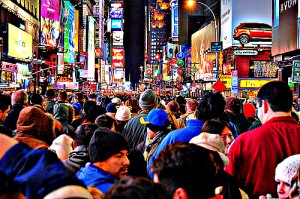 Population of New York City 2014
Population of New York City 2014
When measuring the population of a city, there are three main statistical areas considered: the city proper, the metropolitan area, and the combined statistical area (CSA), which includes both the metropolitan area and micropolitan areas surrounding the city. The following population estimates for all three areas are based on previous population data and population growth rates. The population of New York City (proper) for 2014 is estimated at 8,475,500. Since the 2010 Census, the city proper population is estimated to have grown by about 300,367 or by an average annual growth rate of 0.92%. New York City (proper) is the largest city proper in the United States. Its population density for 2014 is estimated at 27,806.8 people per square mile or 10,742.1 people per square kilometer, which is the densest city in the country. The population of New York City Metropolitan Area for 2014 is estimated at 19,999,127, which is one of the most populous metropolitan areas in the world. Since the 2010 Census, the metropolitan area population is estimated to have grown by about 431,717 or by an average annual growth rate of 0.55%. Its population density for 2014 is estimated at 1,501.7 people per square mile or 579.9 people per square kilometer. Lastly, the population of the New York City Combined Statistical Area, which includes cities in New York, Connecticut, Pennsylvania, and New Jersey, for 2014, is estimated at 23,606,990. Since the 2010 Census, the CSA of New York is estimated to have grown by about 530,326 or by an average annual growth rate of 0.57%.
Boroughs of New York City 2014
New York City proper is made up of five distinct boroughs, coextensive with a county of the state: Manhattan (New York County), the Bronx (Bronx County), Brooklyn (Kings County), Queens (Queens County), and Staten Island (Richmond County). Manhattan happens to be the city’s most densely population borough and is the financial center of the city. The remaining four boroughs are often referred to as the outer boroughs due to the central nature of Manhattan in the city’s operations. The Bronx is the only borough that is a part of the country’s mainland. It is also home to the largest cooperatively owned housing complex in the country. While Manhattan is the most densely populated borough, Brooklyn is the most populated borough. Queens is the geographically largest borough and the most ethnically diverse borough. Queens County is the only county in the country where the median income of African Americans is higher than the median income of Caucasians. Lastly, Staten Island is considered the most suburban area of the city and it contains Staten Island Ferry, which is one of the most popular tourist attractions of the city.
Government of New York City 2014
New York City has assumed the mayor-council form of government since the consolidation of the city in 1898. Both the mayor and the councilors serve four-year terms. There is also a limit of three consecutive terms for both types of office. However, one can run again after a four-year break. As of January 1, 2014, the current mayor is Bill de Blasio, a member of the Democratic Party. The New York City Council is a unicameral body, made up of 51 councilors. Each councilor comes from a district defined geographically by population. There are currently 48 Democrats and 3 Republicans in the city council. As of January 1, 2014, the Speaker of the Council is Melissa Mark-Viverito, a member of the Democratic Party. Each of the five boroughs of New York City (Manhattan, Brooklyn, the Bronx, Queens, and Staten Island) also represents a judicial district of the New York Supreme Court. Lastly, a Republican in a statewide or presidential election has not carried the city since Calvin Coolidge in the presidential election of 1924.
Crime in New York City 2014
While the New York City Police Department is the largest police force in the country, the crime rates of the city have been some of the lowest in the country. In 2013, there were only 334 homicides, which dropped from 419 homicides in 2012. However, after a violent start to the year, some predicted that the homicide level could increase by 75%. The Police Department has enacted a program entitled Operation Crew Cut, which intends to cut down the rate of youth homicides by tackling neighborhood gangs. The Police Commissioner estimates that the program has cut the rate of such homicides by more than half. As of May 14, 2014, there are 2,786 registered sex offenders living in New York City. Lastly, the police force has adopted a controversial policy in 2012 that gives the police the right to stop anyone and frisk him or her to see if he or she has any dangerous items on his or her person. The policy is known as the stop-and-frisk program.
Poverty in New York City 2014
According to the New York City government’s Center for Economic Opportunity, 21.4% of the city lives in poverty. 22.3% of females live in poverty, while 20.5% of males live in poverty. Slightly more than 25% of those under the age of 18 live in poverty, while 21.4% of those over the age of 65 live in poverty. The Bronx is the poorest borough with 26.6% of its population living in poverty, while only 14.5% of those living in Staten Island live in poverty. The white population has the lowest poverty rate among the various races with 14.0% living in poverty, while 29% of non-Hispanic Asians lives in poverty and 25.7% of Hispanics live in poverty. Throughout the city, the lowest fifth of the population has a mean income of $8,993, while the highest fifth had a mean income of about $222,871. However, the top 5% of the population made an average of $436,931. When looking at one of the least poor boroughs, Manhattan, the lowest fifth had a mean income of $9,635, while the top fifth had a mean income of $389,007. However, the top 5% had a mean income of $799,969. Thus, Manhattan has the largest income gap among the biggest counties in the country. Lastly, while the poverty rate was only about 21.4%, almost 50% of the population lives near the poverty line and thus struggles to get by.
 Transportation in New York City 2014
Transportation in New York City 2014
The Metropolitan Transportation Authority provides transportation to all of those living in the metropolitan area of New York City. Through the utilization of subways, buses, and railways, the MTA provides about 2.62 billion trips every year to citizens of New York City. About 80% of those that commute to New York City for work use the mass transit system, which is considered to be the most widely used system in the country. Over the past four years, the MTA has focused on rebuilding and improvement efforts to the public transportation systems. The total budget for 2014 is estimated at $13.6 billion, employing around 65,000 people. As of December 31, 2012, there were 345 rail lines, subway lines, and bus routes, 8778 rail and subway cars, 5,701 buses, and 736 rail and subway stations. In 2014, the MTA is expected to have completed the Fulton Center, which is a new rail station that connects many more parts of the city together, and the 7 Line Extension, which extends the subway from Times Square to the Javits Center. Due to the high population density and transit usage, there is a high level of concentrated pollution in the city, which can lead to many respiratory issues among the city’s population. In an attempt to reducing its environmental impact, the city has worked to implement the usage of hybrid taxes and diesel-hybrid and compressed natural gas buses. Lastly, only 52% of households own a car and 22% of those living in Manhattan own a car.
New York City
Other Relevant Links
Population of New York 2014
New York City Population 2013
New York State Population 2013



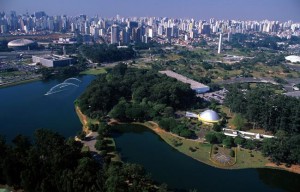 Sao Paulo Population 2013
Sao Paulo Population 2013 Sports in Sao Paulo
Sports in Sao Paulo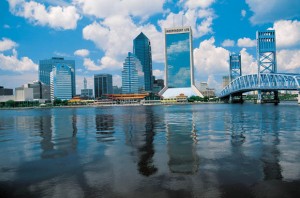 Jacksonville Population 2013
Jacksonville Population 2013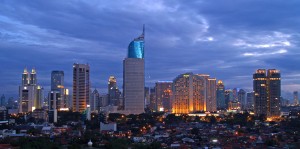 Jakarta Population 2013
Jakarta Population 2013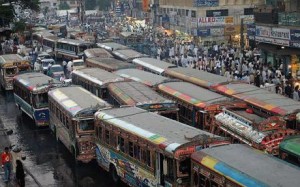 Karachi Population 2013
Karachi Population 2013